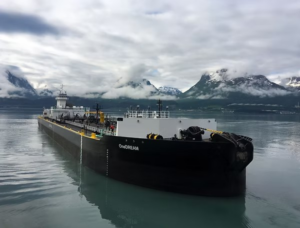New tanker deliveries over the next two to three years are expected to be in very low levels as shipyards are largely full, through the second half of 2025, due to the record amount of containerships and LNG carrier orders placed over the past two years.
The tanker orderbook has remained at historically low levels despite the increase in rates and secondhand prices since the Russian invasion of Ukraine. Some analysts mention that financing is another factor that could impact owner decisions.
Brokers Poten & Partners says in its latest tanker analysis that the VLCC orderbook it is estimated to be to 26 vessels. The fleet is much larger than it was in 2008, and this represents only 2.9% of the VLCC fleet. The orderbook for the other tanker segments is also low with 1.8% for Suezmaxes, 5.4% for Aframax/LR2, 0% for Panamax/LR1, 2.6% for MRs and 0.4% for Handys.
In February 2023, the global tanker orderbook, when measured as a percentage of the existing fleet, has fallen to a record low of less than 4 percent. This is due to a lack of new vessel ordering with just 8 million deadweight tons of new tanker orders placed in 2022, which was the lowest since the mid-1990s, says Teekay Tankers in its fourth quarter and annual 2022 results report.
The company expects the tanker market to remain firm during 2023, due to positive oil market fundamentals, the continued rerouting of Russian oil exports away from Europe, and the subsequent replacement of imports into Europe from other sources, and an expected rebound in Chinese oil imports following the removal of COVID-19 mobility restrictions.
“The potential for outsized earnings in the Russian trades encouraged new players to enter the market and scoop up secondhand vessels as ever-increasing prices, allowing traditional shipowners to dispose of their older tankers at significant premiums. Now many owners are sitting on a growing pile of cash, and they are evaluating what to do next,” in accordance with Poten & Partners.
It is estimated that a number of these owners are looking at ordering newbuildings. Newbuildings are expensive and the delivery time remains relatively long. On the other hand, secondhand vessels are very expensive, if there are available. There are very few modern secondhand vessels for sale. Newbuilding slots may become more readily available as the yards receive less container and LNG orders.
Some analysts mention that financing is another factor that could impact owner decisions.
As it is said by the ship brokerage, consulting and business intelligence firm Poten & Partners, the rapidly rising interest rates and a shrinking number of banks interested in traditional ship finance made it more difficult, and expensive to finance secondhand ships with a traditional mortgage.
In accordance with Poten & Partners the recent turmoil in the international banking system will only make that more challenging.
“In contrast, funds to finance newbuildings are more accessible, in particular shipyard credit in combination with funding from Chinese and Korean Export-Import Banks,” as it is furthermore said.



